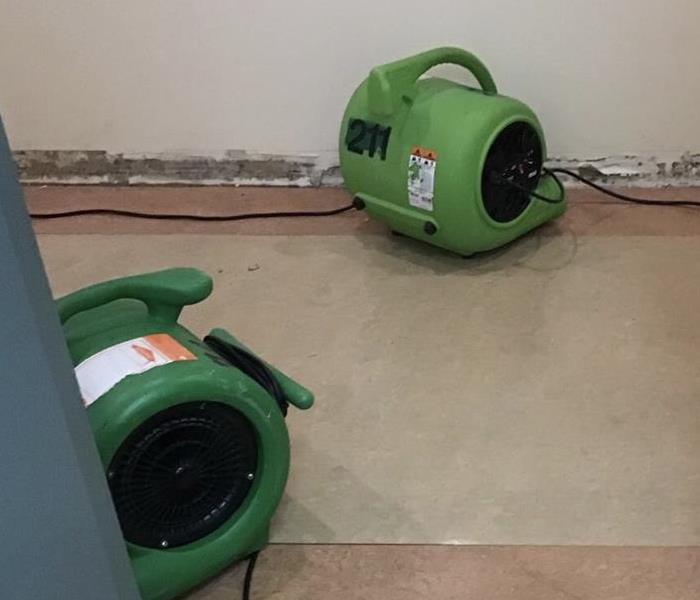Categorization of Water Damage
11/18/2021 (Permalink)
Every homeowner dreads the potentiality of water damage in his or her home. The risk of water damage increases after a heavy rain or when snow melts quickly. This problem can cost a homeowner thousands of dollars by damaging wood furniture, upholstery, electronics, household appliances, and plumbing equipment.
Significant water damage can also cause other problems in your home. For example, water damage will increase your risk of mold growth, which is very expensive to remedy.
If you do run into water damage problems in your home, it’s important that you quickly call SERVPRO to restore your home. SERVPRO will send experienced workers to your home that know the best ways to repair your damaged items and help with any water damage cleanup.
There are several issues that can cause water damage that would force you to acquire the services of a water restoration company. These include but are not limited to a leaky dishwasher, clogged toilets, broken pipes, broken dishwasher hoses, overflowing washing machine, leaky roof, plumbing leaks, and foundation cracks. In addition to water damage in your house, floods, heavy snow, and heavy rain can also lead to the collection of water in your basement.
If you do end up suffering from water damage, it’s very important that you address the problem immediately so the cleanup process can begin as soon as possible. Immediately beginning the process will significantly increase the likelihood of saving water-soaked furniture, carpets, rugs, clothing, and other items that might be damaged by the situation.
The Institute of Inspection Cleaning and Restoration Certification (IICRC) sets the standards for the cleaning industry and water damage restoration. They have placed water damage into three categories and four classes for liquid detection.
When you suffer water damage, the damage will be placed into one of three categories. These categories explain what type of water is causing the damage, how much of a threat the water causes to the health of humans, and potential causes of the damage.
Category one water damage is the least serious of the three categories. In this instance, you’re dealing with clean water, which doesn’t pose a threat to humans. The liquid in this category comes from appliances such as faucets, toilet tanks, and drinking fountains. So causes of category one water damage can be broken appliances or sink overflows.
Category two water damage is the appearance of gray water, contaminated water that contains microorganisms and may cause sickness if ingested by humans. Causes of category two water damage can be broken toilets, broken sump pumps, or seepage.
Category three water damage is the most serious case of water damage. In this category, black water makes an appearance. Black water is unsanitary as it contains bacteria and other organisms that can cause sickness or potentially death if ingested. Causes of category three water damage include sewage problems and contamination of standing water.
In addition to categories, water damage is also put in classes. These classes state how difficult the repair of the damage will be. Knowing the class of water damage is important for assessing the water damage repair options.
The least harmful form of damage is class one. This is the easiest damage to repair because it has a slow evaporation rate. In these cases, only part of a room was affected, little or no carpet has gotten wet, and the moisture only affects materials that have low permeance like plywood or concrete.
Class two water damage has a fast evaporation rate and affect an entire room. In this class, carpets and cushions have been saturated, moisture has accumulated on walls up to 12 inches, and moisture has collected in structural materials. Repairs of this type of damage are more difficult.
Class three water damage has the fastest evaporation rate. This type of damage involves the saturation of ceilings, walls, insulation, carpet, and sub-floors. In class three water damage situations, the liquid may have come from overhead as opposed to ground level.
The most difficult class of water damage to repair is class four. These situations require specialty drying because there has been enough liquid and time that it has saturated materials with very low permeance like hardwood, brick, and stone.
Suffering water damage to your home can be a difficult experience. If a situation occurs where your home is damaged by water, it’s important that you contact SERVPRO as soon as possible to fully restore your home.






 24/7 Emergency Service
24/7 Emergency Service
